Features
Eclectic Nathan Zassman always on lookout for new challenges, new fields to conquer

By MYRON LOVE Aviva Natural Health Solutions on St. James Street is not your typical health food store just as Aviva’s founder, Nathan Zassman, is not your typical entrepreneur.
“What is unique about Aviva is that we take a holistic approach to achieving optimum health through a healthy lifestyle,” Zassman says. “I do a tremendous amount of research in a constant quest for finding solutions to people’s health problems. Many of our products were discovered from research I’ve done working to resolve my own health issues.”
As an example, he cites a brand of footwear from Switzerland, kybun, which was recommended after he tore up some knee ligaments four years ago. Doctors told him he would have to have both knees replaced. He tried the shoes – which claim to repair cartilage and, after ten days, he was walking without pain, after having had to use a walker.
“A physiotherapist who shops here was amazed,” Zassman says. “As a result of my own experience, I can advise people about how properly designed footwear can eliminate knee, hip and back pain.”
At Aviva, Zassman focuses on promoting healthy eating (through food products, healthy food preparation, and dietary supplements) and liquids (as in water filtration systems). A healthy living space requires clean air, for which he recommends air purifiers and humidifiers that can improve any environment. He promotes the importance of getting a good night’s sleep (with organic latex mattresses and coverings that facilitate healing while reducing the time it takes to fall asleep), sitting on active health-promoting chairs, and wearing therapeutic footwear.
One of Aviva’s air purifier brands – Blueair – from Sweden – was recently featured on CBC’s Marketplace – which tremendously boosted Aviva’s sales of the products.“We sold more than 300 units in just two weeks after the Marketplace feature,” he reports, and Aviva continues to sell them in large numbers.“We sell our products worldwide, through our website avivahealth.com.”
Aviva’s eclectic mix of products closely mirrors Zassman’s own lifetime of careers and pursuits. The lifestyle guru began life in Beverly, Massachusetts, which is about 20 miles northeast of Boston. In high school and beyond, he studied trombone and voice at both the prestigious Manhattan School of Music in New York City, and, later, at the American Conservatory of Music in Chicago. He was performing regular concerts in Carnegie Hall with the American Symphony Orchestra when he was only 19 years of age.
In Chicago he performed in the Chicago Civic Orchestra, the training orchestra of the Chicago Symphony, and was a member and soloist with the North Side Symphony of Chicago. Nathan’s first experience as an entrepreneur also occurred in Chicago, when he founded The Zassman Brassmen, a brass quintet that performed educational concerts in schools, as well as formal concert performances.
In 1974, after six of years of study in Chicago with the famous brass pedagogue Arnold Jacobs, Zassman won the audition for second trombone in the Winnipeg Symphony. In addition to his role as a trombonist with the WSO, he joined the faculty of the University of Manitoba, teaching the brass instruments, conducting brass ensembles, and teaching “Brass Techniques” at the Faculty of Education, outlining the basics of all the brass instruments to music education students.
But Zassman has never been defined by just one category. Concurrent with his career in music, he trained as a professional photographer at the Winona School of Professional Photography in Indiana, earning 20 diplomas and Certificates of Merit in a wide range of photographic disciplines. “I became interested in photography while in Chicago,” he recalls, “and spent my summers studying at the best schools and with famous photographers, to refine and improve my craft. I approached photography the same way I did music, seeking out the finest photographers who shared their unique techniques, either privately, or through classes.”
While in Chicago, Zassman developed an interest in Eastern philosophy, studying yoga and astrology at the College of Occult Studies in Chicago. In Winnipeg, he later founded Celestial Interface, producing astrological birth charts for those interested in learning how astrology can improve their lives. He was also appointed CBC Official Photographer, appearing on about a dozen radio and TV spots with CBC Radio and Television, preparing and discussing astrological birth charts on political candidates running for local and national elections.
Zassman founded a photography business specializing in architectural, portrait and commercial photography, creating magazine covers and illustrations for local and national magazines. He also became the Winnipeg Symphony’s official photographer, doing portraits of all the musicians for the symphony programs, as well as taking the annual photo of the orchestra. For many years he taught photography at a school he founded in Winnipeg while the symphony was in session from September to May, and taught professional photographic techniques at the Winona School of Professional Photography, the University of Saskatchewan Department of Art, and the Saskatchewan School of the Arts during the summer months. Zassman also founded The Heliograph Gallery, the first gallery that specialized in photography in Winnipeg.
Now, one would think that teaching photography, performing with the Winnipeg symphony and teaching at the University of Manitoba School of Music would be more than enough to keep someone busy, but Nathan Zassman is a cut above average. He further added businessman to his resumé when he got into computer sales on the ground floor in 1982.
“I had always been interested in cooking and nutrition,” he recalls. “In the early 1980s, I was hired by a local book publisher to write a cookbook with an original idea. I was planning to write the book on my IBM typewriter, but a friend recommended I use a word processor, as he told me that no one used a typewriter anymore for writing.”
One of Nathan’s photography students worked for a local company, Westsun Media. They were selling the Kaypro, which had been rated the best value brand of computer that could be used as a word processor. Nathan purchased a Kaypro with two floppy disk drives for $4000, and couldn’t believe the freedom it provided, allowing him to edit his work, and even check his spelling.
Zassman was so enthused with his computer that he encouraged all his friends to buy one as well. “I was sending so many customers to Westsun to buy a Kaypro computer that I asked the owner, Marc Raymond, if he would allow me trade mine in for a new model with a built in hard drive, which was revolutionary at the time for a portable computer. Marc acknowledged that all his sales were thanks to Nathan and offered him the job as sales manager for the computer division of Westsun. After a short time, Nathan decided he should start his own business and left Westsun.
Thus, in 1982, the musician became a businessman with the founding of Aries Microsystems. “Our business grew rapidly,” Zassman recalls. “By 1986, Aries ranked as the fastest-growing business in Manitoba.” But in 1988 he found that the added responsibilities of running a computer business were interfering with his musical career, so he decided to sell Aries to one of his employees. However, Zassman retained his passion for computers and after his three year non-competition clause from the sale of Aries came to an end, in 1991 he started a second computer company – Opus Computer Solutions.
Zassman retired from the WSO in 1995 to devote himself full time to his new company. “In 1997, I bought the former Winestock’s Wholesale building at 52 Adelaide in the Exchange District and moved my computer business into the downtown marketplace area,” he recalls. “In 2001, I decided to set up a gym on the third level for my computer technicians. I wanted to encourage my technicians to include exercise in their lifestyle. I did my research and bought the best fitness equipment available.”
After a short time, he decided to also sell the fitness lines he purchased for the Opus gym, and Aviva Natural Health Solutions was born.
Zassman then went to the United States, studying Nutritional Therapy in Medical Practice with Jonathan Wright, M.D., and Alan Gaby, M.D., and obtaining certificates in 2003 and 2007. By 2005, Aviva was bringing in enough revenue to stand on its own, so Zassman sold Opus Computer Solutions in 2007 to focus entirely on his new venture.
“I seem to change careers every 20 years or so,” he says.
He moved Aviva to its current location, at 1224 St. James Street, in 2010. And, while still very active in the operations of Aviva, true to form Zassman continues to grow and explore other fields. A bass/baritone, he’s returned to singing and was studying with Mel Braun at the University of Manitoba, as well as singing in two choirs – until Covid forced a pause. On top of all that, a few years ago, began taking acting classes with the Prairie Theatre Exchange. He became a member of Shoestring Players, and has appeared in three plays so far.
He continues to indulge his passion for healthy cooking and baking bread. While running Opus, he became well known for offering his customers and staff free loaves of bread, made from freshly ground organic grain, and is still doing so at Aviva. These days though, he concentrates on sourdough bread. He offers his starter to anyone interested in baking sourdough bread, for free.
Features
Japanese Straightening/Hair Rebonding at SETS on Corydon

Japanese Straightening is a hair straightening process invented in Japan that has swept America.

Features
History of the Winnipeg Beach Synagogue: 1950-2025
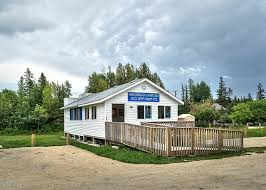
By BERNIE BELLAN The history of the Winnipeg Beach Synagogue is a fascinating one. We have had several articles over the years about the synagogue in The Jewish Post & News.
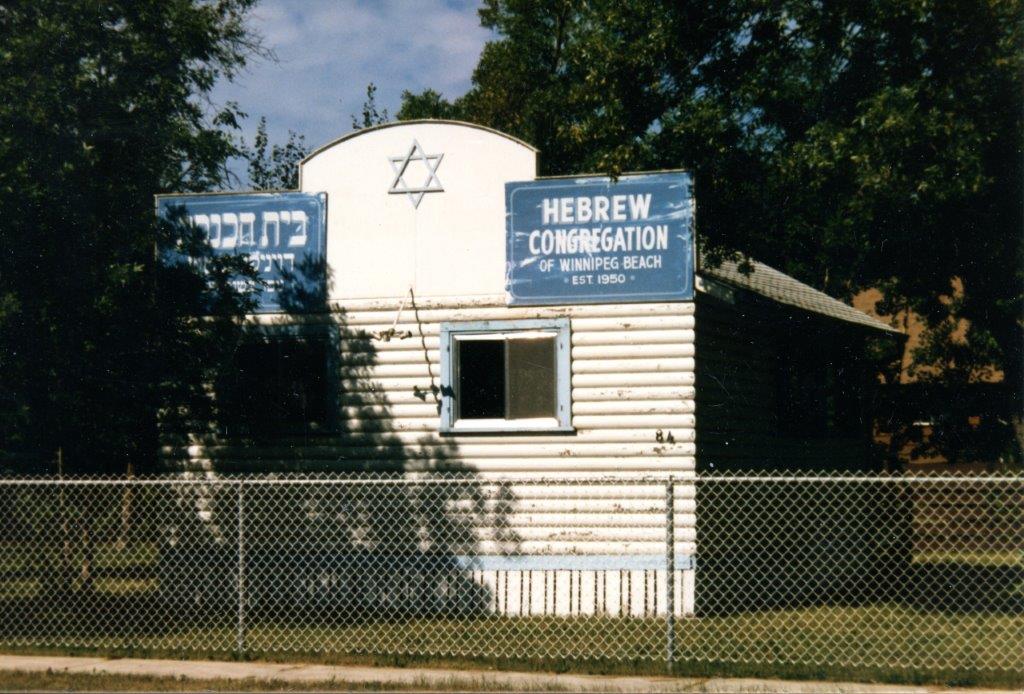
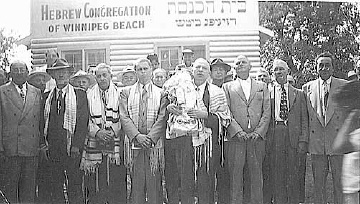
In June 2010 I wrote an article for The Jewish Post & News upon the 60th anniversary of the synagogue’s opening. Here are the opening paragraphs from that article:
“Sixty years ago a group of Winnipeg Beach vacationers decided that what their vacation area lacked was a synagogue. As it happened, a log cabin one-room schoolhouse in the Beausejour area happened to be available.
“In due course, the log cabin was relocated to the corner of Hazel and Grove in Winnipeg Beach, where it stayed for 48 years.”
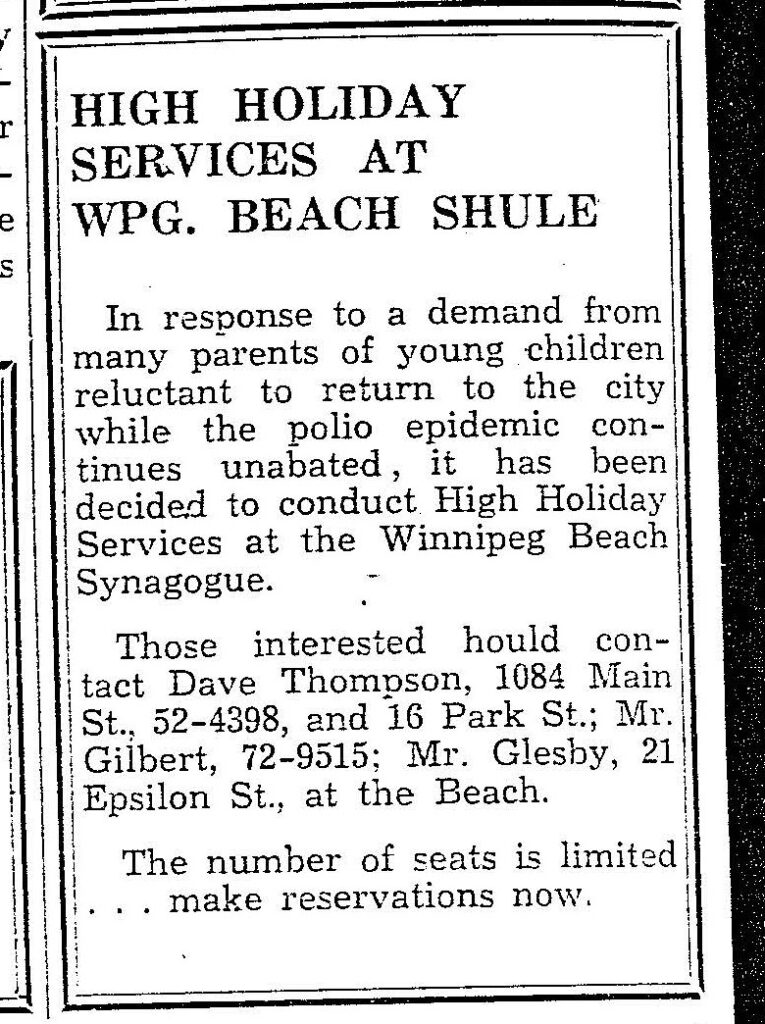
In December 1994 my late brother, Matt, wrote a story about the spraying of antisemitic grafitti on the synagogue which, at that time, was still situated at its original location on the corner of Hazel and Grove in the town of Winnipeg Beach:
“Two 16-year-olds spraypainted slogans like ‘Die Jews,’ ‘I’ll kill you Jews,’ and other grafitti in big letters on the beach synagogue.
“Jim Mosher, a news reporter for the Interlake Spectator in Gimli, said last Halloween’s vandalism against the synagogue wasn’t the first. In the late 1980s, he claimed, it was spraypainted with swastikas.
“Jack Markson, a longtime member of the Winnipeg Beach Synagogue, last week also said he could remember finding anti-Semitic grafitti spraypainted on the synagogue ‘a few years ago,’ and at least twice in the 1970s, when the cottage season was over.”
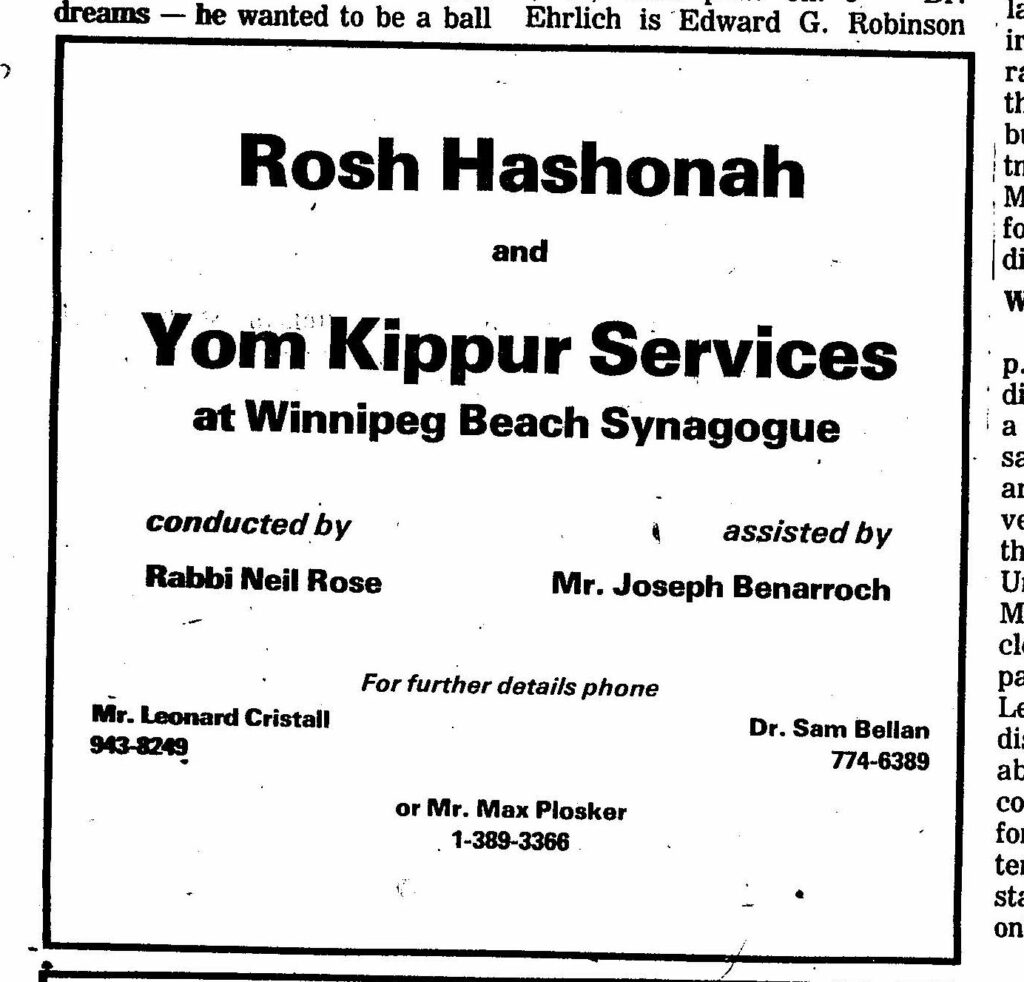
My 2010 article continued: “In 1998 the Town of Winnipeg Beach informed the members of the synagogue that the building would have to be hooked up to the town’s sewer and water system. Rather than incur the cost of $3-4,000, which was thought to be ‘prohibitive,’ according to longtime beach synagogue attendee Laurie Mainster, synagogue goers looked elsewhere for a solution.
“As a result, the board of Camp Massad was approached and asked whether the synagogue might be relocated there, with the understanding that the synagogue would be made available to the camp at any time other than what were then Friday evening and Saturday morning services.
“Over the years the ‘beach synagogue’ had come to be a very popular meeting place for summertime residents of Winnipeg Beach and Gimli. In fact, for years minyans were held twice daily, in addition to regular Saturday morning services. Of course, in those years Winnipeg Beach was also home to a kosher butcher shop.
“While the little synagogue, which measured only 18 x 24 feet, has gone through several transformations, including the move to Camp Massad, and the opening up to egalitarian services in 2007 (The move to egalitarian services was as much a practical necessity as it was a nod to the equality of women – the only Kohen present at the time was a woman!), it has always remained cramped at the best of times.
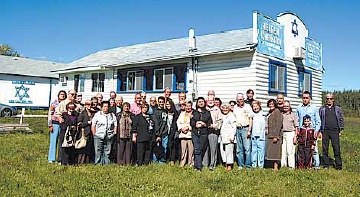
“In recent years the synagogue has seen the addition of a window airconditioner (although to benefit from it, you really have to be sitting just a few feet away), as well as a fridge that allows synagogue attendees to enjoy a regular Saturday morning Kiddush meal following the service.
“According to Laurie Mainster, the Saturday morning service has continued to be popular, even though many of the attendees now drive in from Winnipeg, as they have sold the cottages they once maintained.
“On the other hand, one of the side benefits to being located on Camp Massad’s grounds has been an infusion of young blood from among the camp counsellors.
“Since there is no longer a rabbi available to conduct services (Rabbi Weizman did lead services for years while he had a cottage at the beach), those in attendance now take turns leading the services themselves.
“Anyone may attend services and, while there are no dues collected, donations are welcome. (Donations should be made to the Jewish Foundation of Manitoba, with donors asked to specify that their donations are to be directed to the beach synagogue.)
“Mainster also says that the beach synagogue is now undergoing an expansion, which will be its first in 60 years. An entirely new space measuring 16 x 18 feet is being added – one that will allow for a real Kiddush area. (Until now, a table has been set up in the back of the synagogue and synagogue goers would help themselves to the buffet that is set up each Saturday during the summer. While pleasant enough, it will certainly be more comfortable to have an actual area set aside for the Saturday afternoon after service lunch.)
“As for dress, longtime attendee Abe Borzykowski (in an article written by Sharon Chisvin for the Free Press in 2007) remarked that ‘I don’t think there are many synagogues where people can attend in shorts, T-shirts and sandals and not feel out of place.’ “

As mentioned in that 2010 article, the beach synagogue at that time was about to undergo an extensive remodelling. Here is an article from a January 2011 issue that describes that remodelling process. The article was written by Bernie Sucharov, who has been a longtime member of the beach synagogue:
“The Hebrew Congregation of Winnipeg Beach made a major change to the synagogue this past summer. With the help of many volunteers, Joel Margolese being the project manager, the synagogue was expanded and an addition was built to handle the overflow crowds, as well as to add more space for the kiddush following services.
“The volunteers spent many Sundays during the summer months building the addition. Bad weather caused many delays, but finally the addition was completed one week before the official summer opening.
“The volunteers were: Joel Margolese, Gordon Steindel, Sheldon Koslovsky, Viktor Lewin, Harvey Zabenskie, Nestor Wowryk, Kevin Wowryk, Victor Spigelman, Jerry Pritchard, and David Bloomfield.
“On Sunday, June 25, 2010 a special ceremony was held to affix a mezzuzah to the front entrance door. Gordon Steindel had the honour of affixing the mezzuzah, which was donated by Sid Bercovich and Clarice Silver.
“Refreshments and food for the day were prepared by Phyllis Spigelman, also known as our catering manager. Throughout the summer, Phyllis, Lenore Kagan and other friends prepared the food for our kiddush.
“A sound system was donated by Arch and Brenda Honigman in memory of their father, Sam Honigman z”l. “The system was installed by Joel Margolese and Stevan Sucharov. This will allow the overflow crowd to hear the service in the new addition.
“There were also generous donations of 50 chumashim and an air conditioner. The chumashim were donated by Gwen, Sheldon and Mark Koslovsky. The air conditioner in the new addition was donated by Joel and Linda Margolese.
“The official opening of the synagogue for the summer took place on July 3, 2010. We had an overflow crowd of 70+ people.”
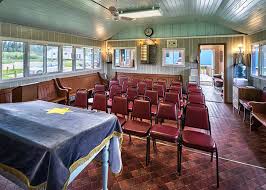
Since that 2010 major addition to the synagogue, it has also added a wheelchair ramp (although I’ve been unable to ascertain exactly when the ramp was built). Also, the synagogue also has its own outdoor privy now. (Attendees used to have to use facilities in Camp Massad.)
And, as already noted in article previously posted to this site (and which you can read at Beach Synagogue about to celebrate 75th anniversary), in recognition of that occasion, on August 2nd members of the synagogue will be holding a 75th anniversary celebration.
As part of the celebration anyone who is a descendant or relative of any of the original members of the first executive committee is invited to attend the synagogue that morning.
If you are a relative please contact Abe Borzykowski at wpgbeachshule@shaw.ca or aborzykowski@shaw.ca to let Abe know you might be attending.
Features
Kinzey Posen: CBC Winnipeg’s former “go-to guy”

By GERRY POSNER If former Winnipegger Lawrence Wall was the CBC go-to guy in Ottawa, CBC Winnipeg had its own version of a go-to guy for many years with none other than the very well known Kinzey Posen. Of course, many readers will recognize that name from his career with Finjan, the Klezmer group so famous across Canada and beyond. It has been written about Posen and his wife Shayla Fink that they have been involved in music since they got out of diapers. And, as an aside, their love and ability in music has now been transmitted to the next generation as in their son, Ariel Posen (but that’s another story).
Kinzey Posen (not to be confused with Posner, or maybe we are to be confused, but who knows for sure?), was a graduate of Peretz School, having attended there from nursery right until Grade 7, graduating in1966. That was followed by Edmund Partridge and West Kildonan Collegiate. Musically, he was in large part self taught. However, he did have some teachers along the way. After moving to Vancouver – from 1974-78, he had the chance to study acoustic classical bass with a member of the Vancouver Symphony Orchestra. When Kinzey lived in Vancouver, he also worked as a jazz musician.
Upon returning to Winnipeg, Kinzey enrolled as a mature student at the University of Winnipeg, where he obtained a Bachelor of Urban Studies degree. Although the degree was in no way connected to the career that followed, his attending the University of Winnipeg was critical to his connecting with the CBC. Why? you ask. Kinzey had a position after graduation working for the Institute of Urban Studies. While there, he met someone who invited him to work for the Department of Continuing Education as one of their program directors. At the time the Department of Continuing Education was located at 491 Portage Avenue, which was also known as the TJ Rice Building. The CBC also leased some space in the same building. According to Kinzey, the CBC part of the building “included HR, different shows and other support offices. Continuing Education was located in the basement and main floor and that’s where I worked.”
KInzey had long had an interest in the CBC, which made the fact that the CBC had some offices in the same building where he was working serendipitous. That Kinzey might be interested in visiting the CBC was not an accident. As a young boy he had a nightly connection to CBC, as it was his ritual to listen to CBC Radio (as well as all sorts of other radio stations across the USA) on his transistor radio every night in bed. He became enamoured of one particular CBC host, Bill Guest, so that when going to sleep, he imagined that he was Guest doing interviews with imaginary guests. That dream of working for CBC became a reality when he had a chance to do a one week gig with Jack Farr’s network program.
Kinzey took a week off from his Continuing Education job and spent five days at the CBC. That week was a training session for Posen, as he had to create ideas, research, pre-interview, write the script, and set up the studio for Farr’s interview. He was almost in his dream job – although not quite – since it was only for one week. His opportunity, however, came in 1988, when he was offered a one-year term as a production assistant – the lowest guy on the ladder, for a show called “ Simply Folk,” with the late Mitch Podolak as the host. Although he was indeed at the bottom as far as those working on the show were concerned, he took a chance and gave his notice to the U of W. The rest is history. In his new job, Kinzey learned how to become a producer. Lucky for him, at the end of the year, when the person he replaced was supposed to come back, she never returned (just like the song, “MTA,” by the Kingston Trio). At that point, Kinzey was hired full time at the CBC.
Kinzey was a fixture at the CBC for 27 years. During those years, Kinzey had the chance to work with Ross Porter, a respected former CBC host and producer, also with Karen Sanders – on the “Afternoon Edition.” One aspect of Kinzey’s job on the Afternoon Edition was to come up with ideas, mix sound effects, arrange interviews and music, to create a two-hour radio experience. In addition, he covered jazz and folk festivals and, as a result, was exposed to some of the best musicians in the world. With Ross Porter in the 1990s, he worked on a network jazz show called “ After Hours,” which was on from 8-10 PM five nights a week. Kinzey was involved with writing the scripts, picking the music, and recording the shows, as well as editing them and then presenting them to the network for playback.
Of course, over his career, Kinzey had many memorable moments. He told me about one of them. The story revolved around the National Jazz Awards one year in particular. The awards were to be broadcasted after the National News which, in those days, began much earlier in the evening, and were over by 8:00 pm. The legendary Oscar Peterson was lined up to play a half hour set at the awards, starting at 7:30. But, as Kinzey told me, Oscar Peterson had a “hate on” for the CBC ecause one of his recorded performances was wrongly edited and he refused to appear on CBC under any circumstances. As the time neared 8:05 PM, which was when the CBC was to begin its broadcast of the jazz awards, it became apparent that Oscar was not going to finish on time. As the producer of the awards show, Kinzey was tasked with telling Oscar Peterson to wrap it up and get off the stage. There was Kinzey Posen, a huge fan of Oscar Peterson, now faced with the prospect of telling Oscar – while he was still playing – with 500 people in the audience, to stop and get off the stage. Not often was or is Kinzey Posen frozen, but that was one such moment. There was one loud “Baruch Hashem” from Kinzey when Oscar completed his set literally just in time.
Clearly, Kinzey was part of a very successful run with After Hours as it was on the air for 14 years. It was easily one of the most popular shows on CBC Radio 2, and a winner of several broadcasting awards. Kinzey also played a major role in producing a two part documentary about legendary guitarist Lenny Breau.
When After Hours ended, Posen became one of the contributing producers to Canada Live and specialized in producing live radio specials for the network, such as the Junos, for CBC Radio One and Two. Needless to say, his career planted Posen in the world of some top notch musicians, including his time spent working with Robert Plant (Led Zeppelin), Dave Brubeck, Randy Bachman, Chantal Kreviazuk and a list of prominent names in the Canadian, American and European music spheres. Locally, the CBC came to refer to Kinzey as the Jewish expert. I would add music expert to that title.
After his 27 year run at the CBC – and before he fully retired, Kinzey went on to work for the Rady JCC as a program director for a year and a half. Of course, to say that Kinzey Posen is retired is a major contradiction in terms. You really can’t keep him down and he has his hand in a variety of programs and projects – most of which he remains silent about, as is his style.
When I realized the full depth and talent of Kinzey Posen, I quickly concluded that he must certainly be related to me. Even if he isn’t, I now tell people he is.
